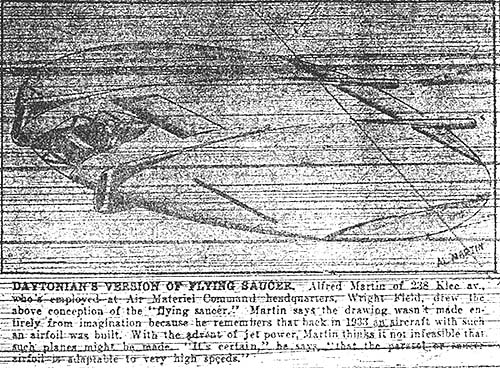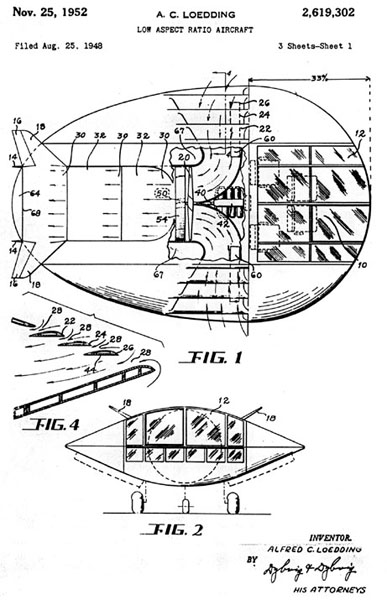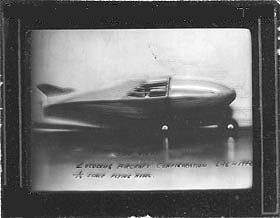< 1947 main
The "Flying Saucer EEI"
On July 9, 1947, a Dayton, Ohio newspaper carried the following illustration - a concept for a flying saucer aircraft by an Air Materiel Command employee named "Alfred Martin."
Apparently "Martin" was actually Alfred Loedding, an engineer in the AMC T-2 Intelligence division who would later become the de facto civilian head of Project SIGN, the Air Force's first official UFO study. If the design in fact represented Loedding's thinking as of early July 1947, he had already arrived at a basic idea about the saucers that would continue to be a significant investigational direction as late as the spring of 1948.
By the fall of 1947 AMC would issue an "EEI" document -- a T-2 term meaning "Essential Elements of Information," which instructed Air Attachés at foreign embassies to keep a lookout for particular technical details on foreign aircraft that AMC was studying. One of the main emphases of the "Flying Saucer EEI" was boundary layer control, a means of reducing aerodynamic drag by use of suction slots or air jets blown over the wing. BLC was a hot new technology in the postwar period, promising enormous increases in speed, payload and range over conventional aircraft. In August 1948, Loedding would apply for a patent on a saucer-like aircraft that employed a simple form of boundary layer suction.
Significant features of "Martin"/Loedding's early July 1947 saucer design are called out below. The blue arrows indicate inlets for apparently conventional turbojet engines. Red arrows indicate probable BLC slots -- the outboard ones, located near the leading edge of the wing, were likely to be used for ejecting a high-speed sheet of air bled from the turbojet compressors, while the large vent behind the cockpit probably was an outlet for a central BLC jet similar to the arrangement shown in Loedding's 1948 patent. The yellow arrow calls out what appears to be a wingtip control surface, a pivoting aileron similar to those used on supersonic missiles.

The overall configuration of the cockpit and inlets is reminiscent of the Northrop XP-79B, a small flying wing fighter which, in its original form, was designed to use BLC technology. A Northrop patent for an early version of this aircraft is referenced in Loedding's 1948 saucer patent.
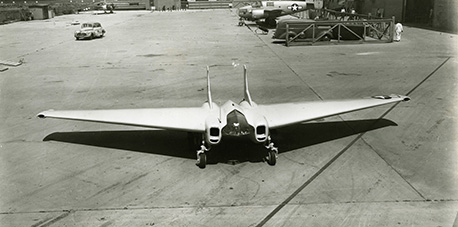
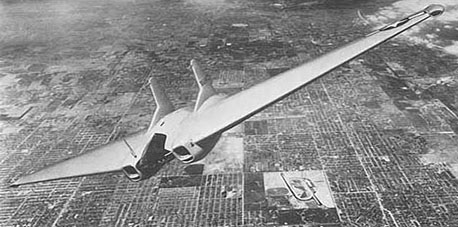
By October, AMC was constructing a wind tunnel model of a man-made saucer concept -- possibly the model shown below, or maybe an earlier version similar to the "Martin" concept.
Loedding was an experienced builder of flying model airplanes and in later years showed at least two of them to Dayton reporters, as in the 1959 photo below, which clearly still used longitudinal BLC slots (arrow) similar to the ones in his 1948 patent.

